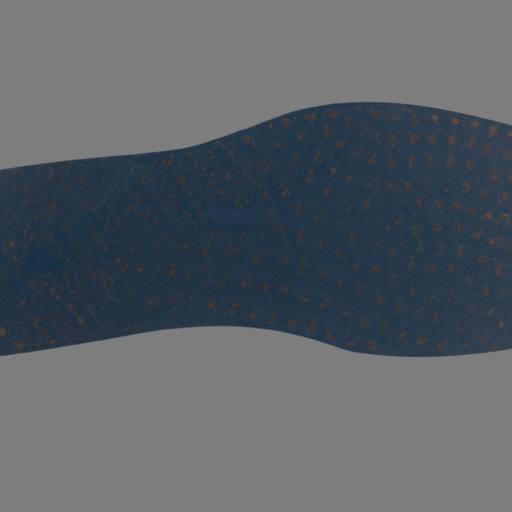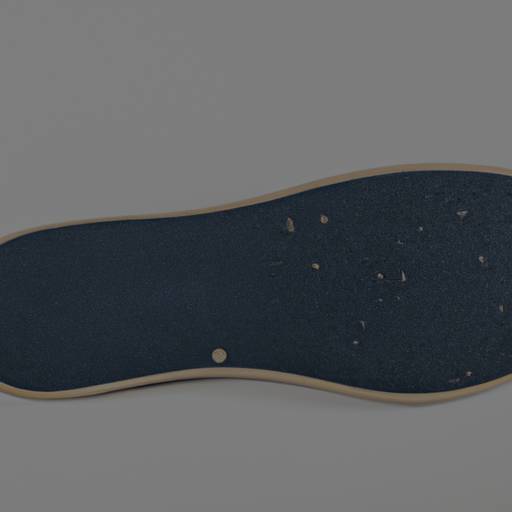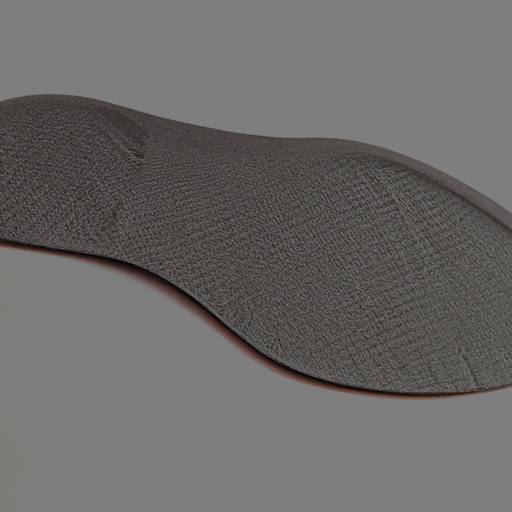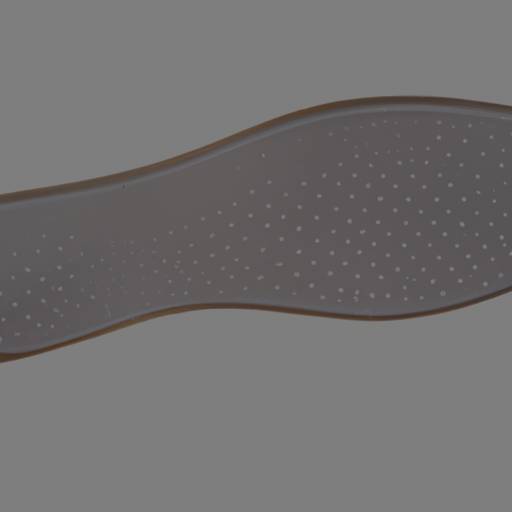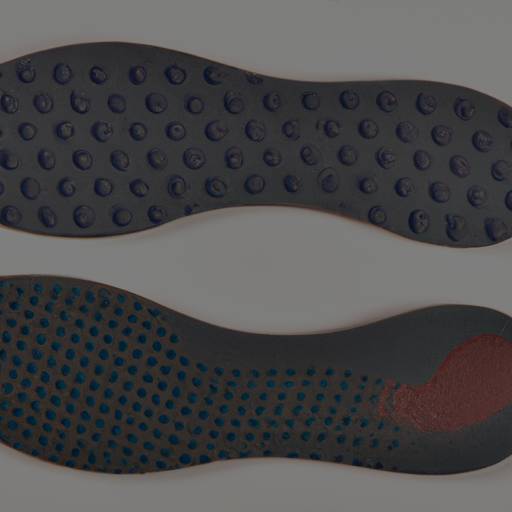When Arch Support Hurts: What to Do if Orthotics Are Uncomfortable
Understanding Orthotics and Arch Support
When it comes to managing foot discomfort and improving foot function, orthotics and arch support play a significant role. In this section, we will explore what orthotics are, the importance of arch support, and common issues that can arise with orthotics.
What Are Orthotics?
Orthotics are shoe inserts or insoles that are designed to provide support, alignment, and stability to the feet. They can be either off-the-shelf or custom-made to address specific foot conditions or discomfort. Orthotics are commonly used to alleviate pain, correct foot abnormalities, and improve overall foot function.
Orthotics come in various materials and designs, including memory foam insoles, gel insoles, and rigid arch supports. The choice of orthotics depends on individual needs, foot conditions, and the level of support required. For more information on different types of insoles, check out our article on insole brands.
The Importance of Arch Support
Arch support is a key component of orthotics that helps maintain the natural alignment of the foot and provides stability. The arches of the foot act as shock absorbers and distribute body weight evenly during standing, walking, and running. However, for individuals with low arches (flat feet) or high arches, the natural arch support may be insufficient, leading to foot pain and discomfort.
Orthotics with proper arch support help address these issues by providing additional support to the arches, reducing strain on the feet, and promoting proper alignment. Arch support also helps improve foot biomechanics, reducing the risk of overpronation (excessive inward rolling of the foot) or supination (inward rolling of the foot).
Common Issues with Orthotics
While orthotics can provide significant relief and support, they may sometimes cause discomfort or present certain challenges. Some common issues include:
- Incorrect Fit: Ill-fitting orthotics can lead to discomfort, blisters, or pressure points on the feet. It’s essential to ensure that orthotics are properly sized and fit snugly in your shoes.
- Adjustment Period: It may take some time for your feet to adjust to the new support provided by orthotics. During this adjustment period, you may experience mild discomfort or muscle soreness. Gradually increasing the duration of wear can help ease this transition.
- Inappropriate Arch Support: Choosing orthotics with improper arch support can exacerbate foot discomfort or lead to new issues. It’s important to select orthotics that are specifically designed for your foot type and needs.
By understanding the purpose of orthotics, the significance of arch support, and common issues that may arise, you can make informed decisions about using orthotics to improve foot comfort and function. If you experience persistent discomfort or severe pain with orthotics, it’s advisable to consult with a healthcare professional for further guidance.
Reasons for Discomfort
When wearing orthotics, it’s not uncommon to experience some level of discomfort initially. However, if the discomfort persists or becomes unbearable, it’s important to identify the underlying reasons. Here are three common reasons why orthotics may cause discomfort:
Incorrect Fit
One of the primary reasons for discomfort with orthotics is an incorrect fit. Ill-fitting orthotics can lead to pressure points, friction, and an overall uncomfortable experience. It’s crucial to ensure that your orthotics are properly sized and shaped to match the contours of your feet.
If you’re experiencing discomfort, consider consulting with a podiatrist or a professional shoe fitting specialist to assess the fit of your orthotics. They can determine whether adjustments are needed or if a different type of orthotic would be more suitable for your needs. Remember to avoid using orthotics that are intended for someone else’s feet, as this can exacerbate the discomfort and potentially cause additional issues.
Adjustment Period
Orthotics, especially when custom-made or significantly different from your regular footwear, may require an adjustment period. Your feet need time to adapt to the new support and alignment provided by the orthotics. During this period, you may experience some discomfort as your feet and muscles adjust to the changes.
It’s important to recognize that an adjustment period is normal and temporary. However, if the discomfort persists or worsens after a reasonable amount of time, it’s advisable to seek guidance from a healthcare professional. They can assess whether the discomfort is a result of the adjustment period or if there are other underlying issues that need to be addressed.
Inappropriate Arch Support
Orthotics are designed to provide proper arch support, which is essential for foot stability and alignment. However, if the arch support in your orthotics is inappropriate for your foot type, it can lead to discomfort. Orthotics with insufficient or excessive arch support can cause strain on the feet, resulting in discomfort and even pain.
To determine whether the arch support in your orthotics is appropriate, consult with a podiatrist or a healthcare professional who specializes in foot biomechanics. They can evaluate your foot structure and recommend orthotics with the appropriate level of arch support for your specific needs. It’s important to remember that everyone’s feet are unique, and what works for one person may not work for another.
By addressing these common reasons for discomfort with orthotics, you can take steps towards finding relief and ensuring a more comfortable experience. Whether it’s assessing the fit of your orthotics, allowing for an adjustment period, or seeking professional guidance, it’s important to prioritize the well-being of your feet. Remember, comfortable feet are happy feet!
Steps to Take for Relief
Experiencing discomfort with your orthotics can be frustrating, but there are steps you can take to find relief. By addressing the issue promptly, you can ensure that your orthotics provide the support and comfort you need. Here are three steps to consider:
Consult with a Professional
If your orthotics are causing discomfort, it’s essential to consult with a healthcare professional, such as a podiatrist or orthopedic specialist. They have the expertise to assess the fit and function of your orthotics and provide guidance on potential solutions. They may recommend adjustments to the orthotics or suggest alternative options that better suit your needs.
During the consultation, be sure to communicate your concerns and describe the specific discomfort you’re experiencing. This information will help the professional determine the underlying cause and recommend appropriate remedies. If you’re unsure about finding a healthcare professional, our article on what shoe brands do podiatrists recommend provides insights into trusted brands known for their support and comfort.
Gradual Break-In Period
Orthotics, especially when newly prescribed or replaced, may require a break-in period. This period allows your feet to adjust to the changes in support and alignment. It’s not uncommon to experience some initial discomfort during this time, but it should gradually improve as your feet adapt.
To ease the break-in process, consider wearing your orthotics for shorter periods initially, gradually increasing the duration each day. This allows your feet to acclimate to the orthotics without overwhelming them. Additionally, wearing them with supportive and well-fitting shoes can help minimize discomfort. Our article on how to make orthotics more comfortable provides further tips to enhance the comfort of your orthotics.
Consider Alternative Options
If the discomfort persists despite adjustments and a break-in period, it may be necessary to explore alternative options. There are various types of insoles available that can provide arch support and alleviate discomfort. Memory foam insoles, for example, offer cushioning and contouring properties that can help distribute pressure and reduce discomfort. To learn more about different insole options, take a look at our article on memory foam insoles.
It’s important to note that while alternative insoles may provide relief, they may not offer the same level of customization and support as orthotics. Therefore, consulting with a healthcare professional is advisable before making any changes.
By following these steps, you can address the discomfort caused by your orthotics and find relief. Remember to seek professional guidance, allow for a gradual break-in period, and consider alternative options if necessary. Prioritizing the comfort and support of your feet is essential for maintaining overall foot health and well-being.
Alternative Solutions
If you find that your orthotics are uncomfortable, there are alternative solutions you can explore to alleviate any discomfort and find the right support for your feet. Here are three options to consider: custom orthotics, different types of insoles, and strengthening exercises and footwear modifications.
Custom Orthotics
Custom orthotics are individually crafted inserts that are specifically designed to fit the unique contours of your feet. These orthotics provide personalized support and can address specific foot conditions or alignment issues. By working with a podiatrist or orthopedic specialist, you can have custom orthotics made to suit your specific needs. These custom solutions can provide better comfort and alignment, reducing discomfort and improving overall foot function. To learn more about the benefits of custom orthotics, check out our article on custom rigid orthotics.
Different Types of Insoles
If your current orthotics are causing discomfort, it may be worth exploring different types of insoles to find a better fit. There are a variety of insole options available that can provide varying levels of support and cushioning. For example, memory foam insoles are known for their ability to conform to the shape of your feet, providing customized comfort. Gel insoles are another popular choice, as they offer excellent shock absorption and cushioning. Arch support insoles, such as those made with rigid or semi-rigid materials, can also provide additional support to alleviate discomfort. To understand the different types of insoles available, visit our article on memory foam insoles.
Strengthening Exercises and Footwear Modifications
In some cases, discomfort from orthotics can be attributed to weak foot muscles or improper footwear. Strengthening exercises that target the muscles in your feet and lower legs can help improve stability and reduce discomfort. Additionally, modifying your footwear can make a significant difference. Look for shoes with good arch support and cushioning, as well as proper fit and stability. This can help alleviate discomfort and provide the necessary support for your feet. For more information on exercises and footwear modifications, refer to our article on strengthening exercises and footwear modifications.
By considering these alternative solutions, you can address any discomfort you may experience with your orthotics. Custom orthotics, different types of insoles, and exercises/footwear modifications can offer relief and improve your overall foot comfort. Remember to consult with a healthcare professional for personalized guidance and to ensure you find the right solution for your specific needs.
Prevention and Maintenance
When it comes to maintaining comfort and ensuring the longevity of your orthotics, it’s essential to prioritize proper footwear selection, regular foot care and stretching, and diligent monitoring and adjusting of your orthotics.
Proper Footwear Selection
Choosing the right footwear is crucial for supporting your orthotics and maximizing their effectiveness. Look for shoes that have removable insoles or extra depth to accommodate your orthotics comfortably. Opt for shoes with a wide toe box to allow your toes to move freely and reduce pressure on the arch area. It’s also advisable to choose shoes with good arch support and cushioning to complement the benefits of your orthotics. For more guidance on selecting the best shoes for your feet, consider our article on what shoe brands do podiatrists recommend.
Regular Foot Care and Stretching
Maintaining proper foot hygiene and incorporating regular stretching into your routine can help alleviate discomfort and prevent potential issues. Keep your feet clean and dry to minimize the risk of infections or skin irritations. Additionally, stretching exercises can help improve flexibility, relieve muscle tension, and enhance the benefits of your orthotics. Consult our article on foot care and stretching for a range of exercises that can promote foot health and comfort.
Monitoring and Adjusting Orthotics
Regularly monitoring the condition of your orthotics is essential for identifying any signs of wear or discomfort. If you notice excessive wear or discomfort, it may be necessary to consult with a healthcare professional or a podiatrist to assess the need for adjustments or replacements. It’s important to remember that orthotics may require periodic modifications to suit your changing foot needs. By staying proactive and seeking professional guidance when needed, you can ensure that your orthotics continue to provide the support and comfort you require.
By implementing these preventive measures and practicing proper maintenance, you can enhance the comfort and effectiveness of your orthotics. Remember to consult a healthcare professional or a podiatrist if you experience persistent discomfort or have any concerns regarding your orthotics.


